Gender Responsive Casting
As I was writing this essay, I stopped many times, fingers hovering over the keyboard to consider—is this mine to tell? Do I—should I—have a place in this conversation? I know my privilege is showing. I know my blind spots are glaring. Then I went back to the writing, because I worried that, as a white cisgender female theatre educator (identities which I share, unfortunately, with the vast majority of folks educating youth artists), if I wasn’t having this dialogue with myself, and my peers, who was? My intention is to hold myself and my colleagues accountable as allies and to imagine ways for us to encourage and support youth artists from trans and gender nonconforming communities.
To start, this isn’t a pretty story. This isn’t a story that makes me feel good, or makes me want to congratulate myself on my insight or poise during a tough moment as a youth-allied adult. This story is the equivalent of showing you the ugly, snorting, snotty, red-nosed kind of cry that makes you gasp for breath—and only few get to see. This is a story when being an ally sucks because you fucked up again. This story starts in rehearsal with an ensemble of teen artist-activists and me.
We had finished a strong run of our new play and were decompressing. One of our students, a sophomore who identifies as trans, asked me “Meg, can I share a story?” They were visibly excited to share, but their excitement was tinged with frustration. They shared a story that happened in their high school’s theatre class—not a class that they were in—but a story that had filtered through the LGBTQ community at their school:
A theatre class was working on a play in which there was a trans-female character. The playwright specifically stated in the text that the role was never to be cast with a cisgender male, rather a cisfemale, or a trans-female. According to the other students, it seemed that the teacher was going to move forward in casting a cismale in the role, despite the playwright’s wishes. My student was frustrated and angry by this decision and was sharing that a group of students were mobilizing and planned to approach the teacher to discuss the impact of this decision and request recasting for this role.
We all listened, taking in the story—most people, including myself, expressing frustration and anger at the ignorance of this director and the impact of their actions.
As I expounded on the importance of responsible casting around race and ethnicity, my example painted a picture of a hierarchy of identities that we need to account for in our representation and it’s okay if we can’t hit all of the marks—the “visible” ones are the most important.
These thoughts were racing through my head:
- Casting a cismale in that role wouldn’t be as bad as casting a white actor in a black role—or a white actor for any character of color, for that matter.
- Trans and genderqueer identities are less visible than race, so directors can be more flexible in a casting process.
In the discussion that followed, I, as an educator, tried to make connections between the story and the identities we had a responsibility to accurately represent in our own play. I shared our challenges around finding a Latina teen for a role and how it wouldn’t be responsible or right to cast a white actor in the role. I spoke about the challenges of not only finding someone who came from the right cultural background, but also someone who physically looked the part—making it easy for an audience to read the character and understand the importance of culture, ethnicity, and race for this character’s journey throughout the play.
In this moment I really fucked up—as an ally, as a socially conscious artist, and as an educator. By drawing these connections, I belittled the importance of gender in casting as I expounded on the importance of responsible casting around race and ethnicity. I implied that race is a more readable marker than gender, therefore gender could be more flexible in a casting process. My example painted a picture of a hierarchy of identities that we need to account for in our representation and it’s okay if we can’t hit all of the marks—the “visible” ones are the most important. I talked about physical appearance and the importance of a character reading to an audience—using the same oppressive ideology that prevents trans or gender-nonconforming folks from being cast in the first place. As I talked in circles, I fumbled, I messed up, and nothing I said in the moment could fix the damage I had done. I thanked the student for sharing the story and we finished up rehearsal for the night.
After this massive failure as an ally, I began to wonder: How have traditional casting practices (and my own actor training) perpetuated harmful, discriminatory biases in my casting practices? As a theatre educator, how can I support trans or non-binary young actors to develop their skills as artists? This need has also been identified by other authors on HowlRound, particularly by MJ Kaufman in “Don’t Call me Ma’am: On the Politics of Trans Casting.”
Going through an acting training program in the early to mid-2000s, my fellow students and I were invisibly groomed to learn and gravitate toward our “type.” There was no conversation about finding or discovering, or even playing toward our “type”—we were just repeatedly cast in specific roles, and taught how to play them to their fullest potential. In my acting classes I played Marlene in Top Girls, Christina in Red Light Winter, Heidi in The Heidi Chronicles, Catherine in Proof, Evelyn in The Shape of Things. I had no sense of how these roles stacked up and created a box for me to exist as an artist—they were assigned to me, and I obediently performed them to the best of my ability. I didn’t push back, I didn’t question, and I ultimately placed my trust and my professional development into the hands of my acting faculty.
It wasn’t until years later when I continued my training in Washington, DC, did anyone even use the phrase “finding your type.” I did some helpful exercises in acting classes that led me to understand who others perceived me to be, and how I “fit” into the theatrical world. It was to help me of course, however I found myself sliding headfirst into a mold that prohibited me from seeing other possibilities.
Then, after a few years of halfheartedly pursuing acting and passionately pursuing applied theatre and community-based art making, I finally realized I was most excited by working with young people to make art. More specifically, to create performance that mirrored their truth—drawing on personal experiences, crafting stories that mattered to them, making themselves visible on stage by asking big dynamic questions and imagining the answers. I currently serve as the managing director for a youth theatre ensemble that devises plays that interrogate gender inequities, healthy relationships, and work to prevent dating violence. Our ensemble explores social justice issues, privilege, oppression, and activism as they create their plays. Then they rehearse and tour their play to 3,500 middle school students through our spring touring season.
Now, flashback to the moment with my students and our conversation—it was as if all of my anti-oppression work leached out of my brain and the traditional perspectives on casting rushed in to confidently (insidiously) fill the gap.
What I was left with, after this conversation, was the nagging sensation that I failed my student. They identify as trans, and luckily, there was a character that they excelled at that happened to be genderqueer in our play. Was that type casting? I’d rather think not—the role was uniquely suited for this person’s energy, charisma, and level of skill. They are very happy with their role in the show, but I refuse to pat myself on the back.
Because, as I continued reflecting on this experience, I realized that at no point in our casting process had we ever considered asking our youth: “What gender would you like to play?” or even “What gender would you feel comfortable playing?” While we didn’t ask these questions, we did do a casting exercise where they had to cast themselves, and the rest of their ensemble according to their top three roles, resulting in three different cast possibilities. We used this activity to help us cast them and honored their choices where we could—guessing their preferences by the genders they chose to cast themselves in. But we never openly asked our trans and gender nonconforming students to reflect on questions like these or have a conversation where they could share with the directors what support they needed around casting.
And in our ensemble we have at least two other students who identify outside of the gender binary. Two other students who might be feeling uncomfortable playing roles that directly conflict with their gender identities. Two other students who need affirmation and support, rather than the reifying of what the world assumes about them every day—that they are cisgender females; rather than the violence of mis-gendering them publicly through the characters they play on stage.
I realize that in traditional acting schools, that might be a ridiculous thought—or at least it would have been in mine. As many teachers tell their kindergarten students, “You get what you get, and you don’t get upset.” You take the role of chorus girl #9, or silent maid crying for Mary Stuart’s imminent execution, or neurotic postmaster, and you don’t question it. Because you are lucky, you are lucky to even be considered for a role. There’s a line out the door of twenty-something actresses who would take it in a heartbeat. Competition fuels the need to accept all roles and silence any discontent or discomfort. But because of my cis-privilege none of these moments felt inherently violent or invalidated my gender identity or very existence.
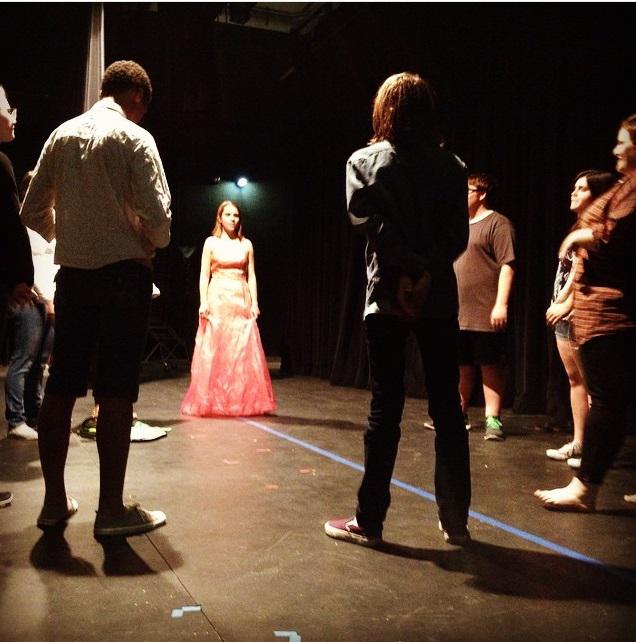
This bias toward visible identity markers deeply impacts the casting of trans and gender nonconforming people. Are our traditional casting methods dangerous and violent towards folks whose gender identity may appear invisible, or can’t be ascertained from a brief glance at a resume?
In acting school we are taught that it matters what the auditors see when you walk in the room—height, weight, eye color, beauty, voice, ability to move. Gender. But this bias toward visible identity markers deeply impacts the casting of trans and gender nonconforming people. Are our traditional casting methods dangerous and violent towards folks whose gender identity may appear invisible, or can’t be ascertained from a brief glance at a resume? And how does this impact young artists in the process of learning their craft who need supportive artistic communities and challenging, substantial opportunities to hone their skills?
It is an oppressive act to not hold ourselves responsible to ethically representing an actor’s gender identities onstage in the same way we (hopefully) represent race and ethnicity. We all have a part to play in dismantling oppressive traditional casting systems—whether we work in young actor training programs, or university theatre departments, or community theatres, or professional theatres.
This moment with a smart, critically engaged, courageous teen artist caused me to interrogate and rethink my approach to casting, and made me wonder why I felt beholden to an archaic system that doesn’t support the identities of my teen artists or their artistic development. In my future work, I want to shift my casting practices to become more socially just, in turn, supporting a rehearsal process that values actor identities as much as character identities. As a theatre educator, I think this is vital to the heart of my (our) work—developing skilled, ensemble-minded, brave, adventurous, socially-responsible, and empathetic artists. Moving forward, I want to cultivate casting practices that value identities, create opportunities, and deeply care for the artists we wish to work with and their professional development. I hope you’ll join me.

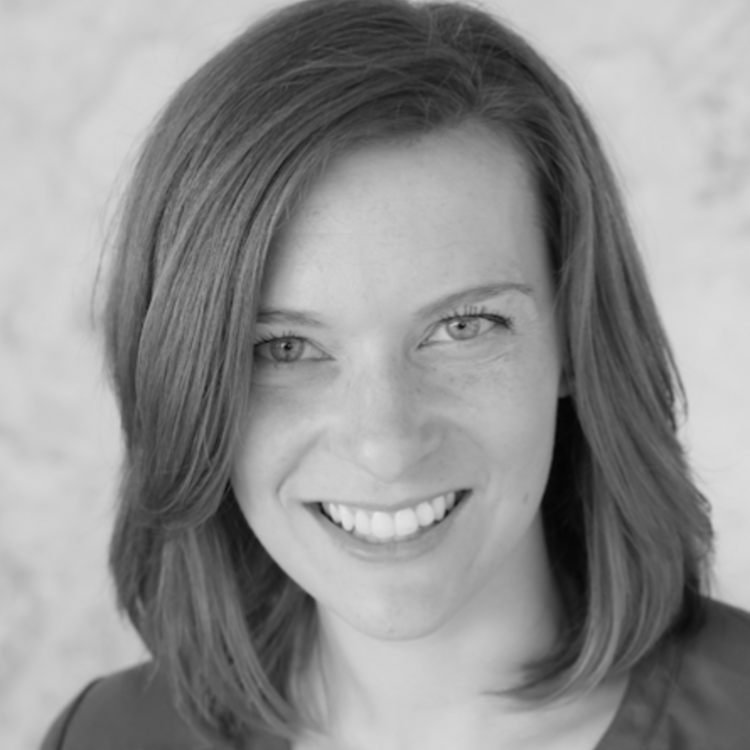
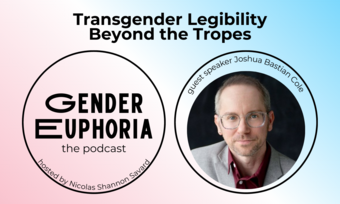


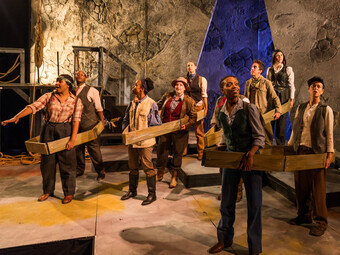

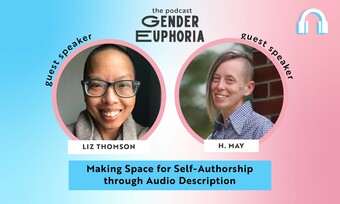


Comments
The article is just the start of the conversation—we want to know what you think about this subject, too! HowlRound is a space for knowledge-sharing, and we welcome spirited, thoughtful, and on-topic dialogue. Find our full comments policy here
I felt a bit conflicted toward the end of this article.
First off, I thought Meg Greene was brave to own up to her
mistake. It really did sound like a one-time accident, since she chooses to
work with youth that might be dealing with gender inequities, among other
things. As I discovered somewhat recently that I’m non-binary myself, I’ve
become more aware of those gender inequities and try not to assume someone’s
gender just because of their biological sex. I find myself using the more
scientific words of “female” and “male” when describing someone, instead of “man”
or “woman,” which gains me raised eyebrows because I sound so formal, but I
prefer not to make assumptions. And so I find Meg’s job to be fascinating
because, although my discovered non-binary came with a non-caring shrug from
me, I know that others may go through an identity crisis or denial in accepting
this newfound insight, so the fact that Meg has created a space where people
are allowed to share who they really are and know that they’ll be accepted
sounds like a wonderful job, and she sounds like someone I would have enjoyed
learning from. I can’t imagine her committing the faux pas that she made in
this article again.
That said, while I understand she’s trying to be supportive
of her young students and let them have the freedom to only be in roles that
don’t conflict with their gender identities, I think it’s a bit unrealistic.
Acting is a passion, sure, but it’s also a job. If you are looking and looking
for a job and finally find one, you don’t get to say that you don’t like doing
it and can you do something entirely different instead while still being paid?
It’s the stark reality of being an adult, and not everyone gets to work in
their dream job. I understand; typecasting is awful, especially when it’s in a
role you don’t even like. But to find steady job as an actor or actress, you’re
going to have to get out of your comfort zone and play roles you don’t
particularly like to pay rent. It’s either that, or continue looking for your
ideal role, whenever that may come.
What an interesting article! Nowadays, casting has become so difficult with all the things we need to think about before casting someone. Our world is changing, and things are becoming more prominent and important in the theatre world; and especially when it comes to casting. It seems like everyone gets offended these days. People are saying that casting for Hamilton they shouldn’t cast white people, but then that offends white people. A whole controversy for In the Heights casting here in Phoenix Arizona where an Iranian actor is playing the role of Usnavi, which is supposed to be Dominican American and people are going crazy. I can’t imagine the frustration that comes with gender when casting a show. The process of casting based on someone’s gender, race, sexuality, etc. has really come to the point to confuse me.
This brings up a casting component I had never considered. And one that certainly should be considered with young actors in educational settings at a minimum. I recognize that in my work as a playwright for the very young I often write my characters as gender-less... Often I see or perhaps simply choose to imagine children and childlike characters that way as I long for society to continue moving forward in brewing down gender bias and moving beyond traditional gender roles and stereotypes.
Great article, Meg. Thanks for sharing your failures. Courageous and so helpful.